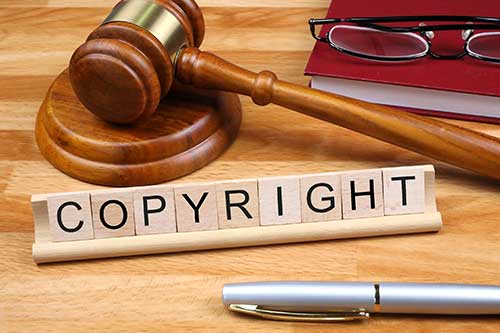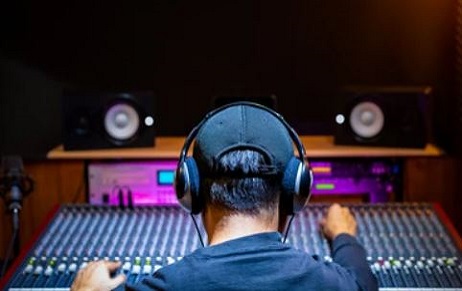A new era started with the innovation of Artificial Intelligence (AI). AI systems can produce…
Who Is The Rightful Owner As Per The Indian Copyright Regime?

It is currently a well-established principle of intellectual property law that one can only hold a copyright on the expression of a concept, not on the idea itself (the actual film made from the idea). Specific provisions of the Copyright Act, 1957 (hereinafter referred to as the ‘Act’) must be examined in order to grasp the notion.
What does the Copyright law say about film remakes?
A motion picture is classified as a “cinematograph film,” and the term “author” refers to the motion picture’s producer. The term “copyright” is defined in Section 14 of the Act as the owner’s exclusive right to adapt a literary, dramatic, musical, or artistic work. In addition, section 51 of the Act states that a copyrighted work is infringed if an individual does something to which the owner of the copyright has been granted exclusive rights without first obtaining a license from that owner. However, the connotations of the term “copy” have been covered by the phrase “adaptation” in the case of a cinematograph film, giving the owner of the copyright in a cinematograph film (i.e., the motion picture’s producer) the sole right to make a copy of the film.
As a result, the copyright holder has the exclusive right to remake a motion picture based on a fundamentally similar narrative, albeit with modernization or updating features. Of course, the right to make a remake can be assigned and/or licensed; otherwise, manufacturing a remake without permission from the producer is a copyright violation of the original work. The degree of intentional resemblance between the two works would be the criterion for determining whether a film is a remake or not. The Indian Copyright Act, 1957, unlike many other nations’ copyright laws, particularly in Europe and the United States, does not include the word “derivative work.” The new work developed as a result of a “adaptation” of the original work, on the other hand, can be interpreted as work in India, which may equate to the term “derived work” as defined in other jurisdictions.
According to Indian law, when an owner offers a third party a license to remake a cinematograph film, the licensee creates new work, and the copyright to that new work is transferred to the licensee unless there is a contract to the contrary. If the original work’s owner wishes to retain ownership of the copyright in the remake, the licensee must convey these rights to the original owner through an express contract. It is a work of joint authorship when a work is created by the collaboration of two or more authors, and one author’s contribution is not distinguishable from the contribution of the other author or authors.
If the original owner and the licensee collaborate to create a new work using a common design in the event of a remake, they will be considered joint authors and/or co-producers of the new work. With the current difficulties surrounding the remakes of various films, it is only a matter of time until obtaining suitable licenses for the production of a remake becomes commonplace.
Ambiguity regarding who is the rightful owner
The right to rework a cinematography film does not appear to be an explicit right. It is to be read in light of existing rights, most likely Section 14(d)(i) of the Act, as it seems closer to remake than other rights). As a result, it’s unclear who can own the rights to a movie remake: a producer, a screenwriter, a director, or anyone else who owns the rights to the film. When the adaptation rights of literary authors in a movie (script, plot, and dialogue writers) are examined, the doubt grows even more, because a remake of a movie is more of an adaptation of the underlying literary works than a duplicate of the original movie.
Judicial Standings
In MRF limited v. Metro Tyres Limited (2017), Despite the fact that the word “original” is not specifically stated before the word cinematograph film in Section 13(1)(b) of the Indian Act [1957], the court held that it is nevertheless a necessity under sub-section (3). (a). When section 13 of the Act is read in conjunction with the definitions of “cinematograph film” and “author” found in clauses (f) and (d) of section 2 of the Copyright Act, it becomes evident. The court explained that the wording “to make a copy of the film” in Section 14(d)(i) of the Act, does not merely mean making a physical copy of the picture via duplicating. Furthermore, the court decided that the R.G. criteria applied to film as well. Because the extent of protection for the film is the same as that for any other original work, Anand’s case would apply.
Similarly, the Delhi High Court in the case Yash Raj Films Pvt Ltd v. Sri Sai Ganesh Productions & Ors. (2019) the lawsuit concerns a cinema known as “Band Baja Barat.” In this case, the plaintiff claimed that the storyline, plot, and presentation of the theme in the original film were all completely plagiarized. It was claimed that the idea, concept, storyline, character sketches, story, script, form expression, and other aspects of the works had been duplicated and that there were significant similarities between the works. Copyright infringement is the result of such obvious copying. Plaintiff contended that individuals who have viewed both films will get the distinct sense that the defendant’s work is a carbon copy of the plaintiff’s work. As a result, the requirements of R.G. Anand’s test for determining infringement are met. The defendants had infringed on the plaintiff’s copyright in the film, according to the Delhi High Court.
The following implies that remakes are covered under section 14(d)(i) of the Act, and the existing condition of film protection favors film producers because even remakes of films (if the film is original) cannot be made without the producer’s permission. Although no aspect of the original recording is duplicated in remakes.
In the case of Thiagarajan Kumararaja v. Capital Film Works (India) Pvt. Ltd., (2017) a dispute between the writer-director and the producer of the film “AaranyaKaandam” resulted in the court ruling. In the issue at hand, the producer had only been granted a limited license to utilize the script in a single film. The Supreme Court ruled that if the writer owns the copyright to the script, the producer cannot hold the remake rights. It stated:
“A remake of the film or its versions which are substantially similar to the original cinematograph film cannot come within the ambit of the right to copy a film, which is provided for under Section 14(d)(i) of the 1957 Act. In our opinion, while the right to copy a film includes the right to replicate the said film, it, however, does not include the right to remake or to make different versions of the same film.”
The Madras High Court recently ruled in favor of the film’s producer in the matter of S.J.Suryah (a.k.a. S.JustinSelvaraj) v. S.S.Chakravarthy and ors. (2021), The Hon’ble Court stated that in the case of films, particularly cinematographic films, the first owner of the copyright is the producer, citing Section 17 of the Copyright Act, 1957, which deals with the ‘First Owner of Copyright.’ The producer has the remake rights under the work for hire agreement under Section 14(1)d of the Copyright Act, in addition to the copyright, and nothing prevents him from doing a remake. Such a proprietary interest may be assigned to anyone else in conformity with the law. In a screenplay, a writer may have copyright, but in a film compilation, the producer has copyright.
Conclusion
In Indian Copyright law, the scope of remake rights is unclear; some cases, such as MRF v. Metro Tyres[2017] and Yash Raj Films v. Sri Sai Ganesh Productions [2016], including remake rights in the Producers’ existing rights (broadening the scope of the right to make copies), while others, such as Mr.Thiagarajan Kumararajavs M/S Capital Film Works [2017], hold it otherwise. Furthermore, in the case of S.J.Suryah (a.k.a. S.JustinSelvaraj) v. S.S.Chakravarthy and ors. [2021], Suryah was unable to establish a prima facie case that he owned the copyright in the relevant film’s screenplay or dialogue. However, if the individual can show that the storyline, screenplay, or dialogues were not commissioned but were allowed to be utilized by him throughout the film’s production, he may be able to claim rights to them. As a result of the differing views of the courts, people tend to reproduce the original work and call it a “remake.” There are a variety of consequences of plagiarism, including financial consequences, as unauthorized remakes result in original creators receiving no royalties, and other consequences, such as a lack of creative content production and no investment in the hard work of people creating original content. Eventually, Bollywood suffers reputational and financial ramifications as a result of this. To address these issues, the Indian system must either add new provisions to the Copyright laws especially addressing remake rights, or improve contractual agreements to enforce severe laws in such cases and nurture original talent in the industry.
Author: Anuja Saraswat – a student of B.A.LL.B (Hons.) from NMIMS Kirit P. Mehta School of Law (Mumbai), in case of any queries please contact/write back to us via email [email protected] or contact us at IIPRD.



